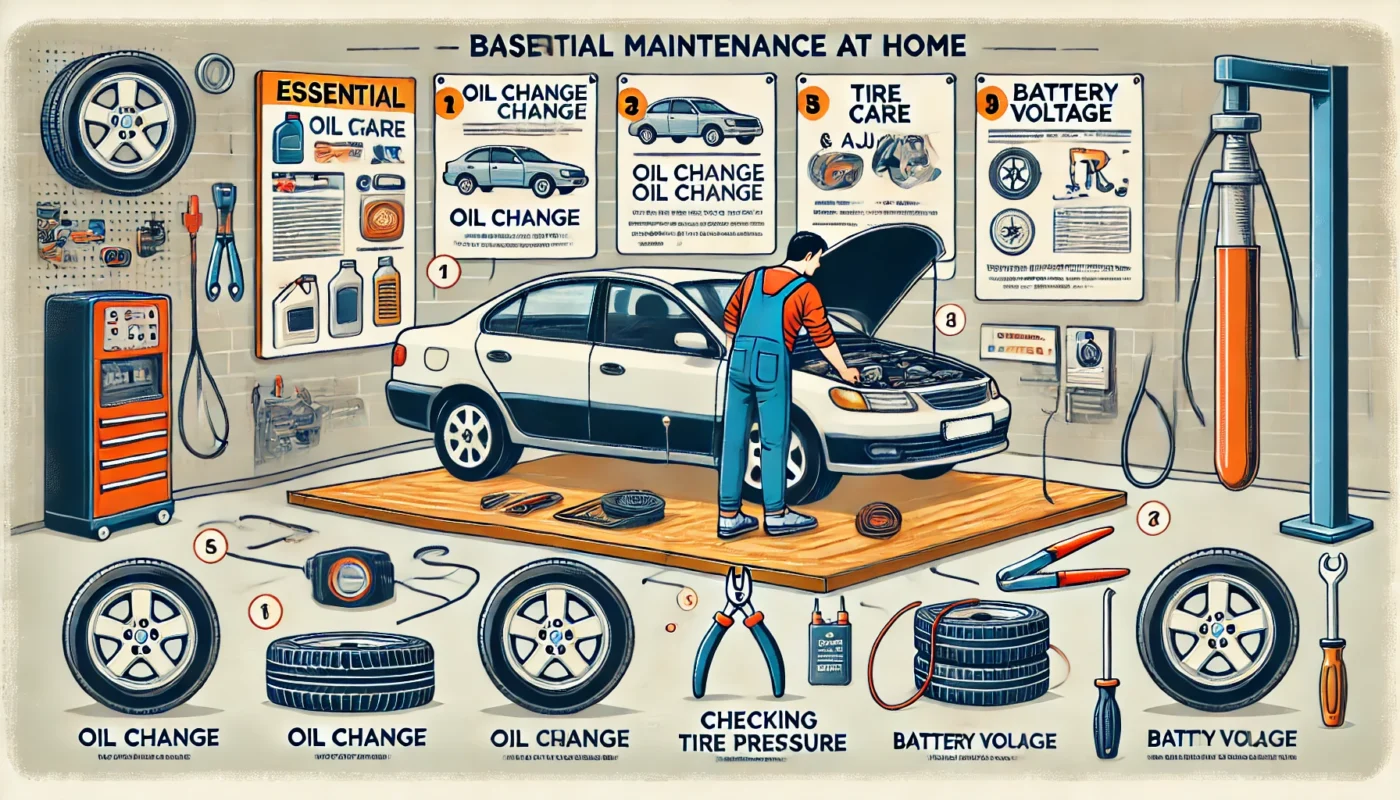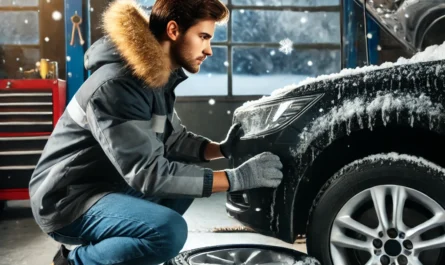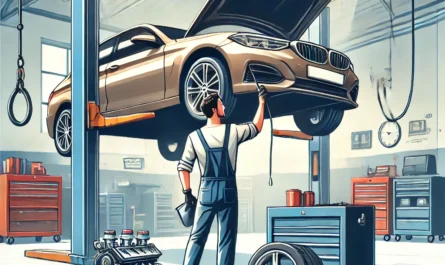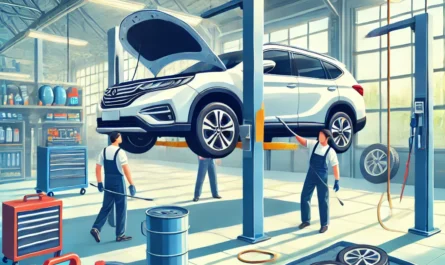Maintaining a vehicle doesn’t have to be left to professionals alone. By learning basic car maintenance at home, you can save both time and money while ensuring your car runs smoothly. This guide offers an extensive look into essential at-home car maintenance tasks that will help extend the life of your car, improve its performance, and keep you safe on the road.
At-Home Car Maintenance
Keeping your car in top shape is easier than you might think. Basic car maintenance tasks can be done right in your garage or driveway, and they can extend the life of your car, improve fuel efficiency, and reduce repair costs in the long run. Whether you’re a novice or have some experience, there are practical, straightforward tasks you can perform yourself.
Why Car Maintenance Matters for Longevity and Performance
Regular car maintenance isn’t just about keeping the engine running. By paying attention to routine checks and small fixes, you help prevent larger, more costly issues down the line. Neglecting basic upkeep can lead to expensive repairs, reduced safety, and poor vehicle performance. With a little time each month, you can ensure your car remains reliable, fuel-efficient, and safe.
Tools You’ll Need for Basic Car Maintenance
Having the right tools on hand makes DIY car maintenance easy and safe. Here’s a list of essential tools to get started:
- Socket set and wrenches for bolts
- Oil filter wrench for easy oil changes
- Tire pressure gauge to check tire pressure accurately
- Jack and jack stands to lift the car safely
- Battery tester to check voltage levels
- Spark plug wrench for spark plug replacement
- Funnel for fluid refills
- Gloves and safety goggles for protection
Investing in a tool kit might seem expensive, but these tools pay for themselves over time and can last for years if used and stored properly.
Inspecting Your Car: A Routine to Develop
A quick inspection of your vehicle can reveal any visible issues like leaking fluids, worn-out tires, or loose parts. A general check should involve:
- Examining the tires for signs of wear and proper inflation.
- Checking under the hood for leaks or unusual smells.
- Inspecting headlights and taillights to ensure all bulbs are functioning.
- Listening for unusual noises while the car idles or during a short test drive.
Building a habit of routine inspection allows you to identify minor problems before they become significant.
How to Check and Replace Your Car’s Oil
Regular oil changes are vital for engine health. Oil lubricates the engine’s moving parts, helping to reduce wear and prevent overheating. Here’s a step-by-step process to check and replace your car’s oil:
- Park on a level surface and turn off the engine.
- Locate the dipstick, pull it out, and wipe it clean.
- Reinsert the dipstick, then pull it out to check the oil level and color.
- If the oil is dirty or low, change it by placing a pan under the oil plug, removing the plug, and allowing the old oil to drain.
- Replace the plug, then refill with the recommended oil.
Refer to your owner’s manual for the right oil type and quantity, as this varies depending on the vehicle.
Changing the Oil Filter: Simple Steps to Follow
The oil filter traps dirt and debris, preventing them from circulating through the engine. When changing the oil, it’s essential to also replace the oil filter:
- Locate the oil filter (typically near the engine block).
- Use an oil filter wrench to unscrew and remove it.
- Apply a thin layer of new oil to the rubber gasket of the new filter.
- Install the new filter by hand, then tighten it slightly with the wrench.
This process keeps your engine’s oil clean, which is crucial for optimal engine function.
How to Monitor and Refill Engine Coolant
Coolant, or antifreeze, helps keep your engine from overheating. Checking and refilling coolant is simple but very important:
- Ensure the engine is cool before opening the radiator cap.
- Check the coolant level in the overflow reservoir; it should be between the “low” and “full” markers.
- If the level is low, add a 50/50 mixture of coolant and water unless otherwise specified.
Using the correct type of coolant as per the manufacturer’s specifications ensures efficient cooling.
Inspecting Brake Fluid and When to Change It
Brake fluid is essential for effective braking. Checking the brake fluid is straightforward:
- Locate the brake fluid reservoir under the hood.
- Inspect the fluid level and ensure it’s within the “min” and “max” indicators.
- If it’s low, add the recommended brake fluid type.
Replace brake fluid every two to three years or as recommended in the manual, as old fluid can degrade and compromise brake performance.
Checking and Replacing Windshield Wiper Fluid
Windshield wiper fluid is essential for visibility. To check and refill:
- Open the wiper fluid reservoir cap.
- Pour in washer fluid until it reaches the full mark.
Ensure the fluid is winter-ready during colder months to avoid freezing.
Tire Care Basics: Inspection, Pressure, and Rotation
Tires directly impact safety, handling, and fuel economy. Tire care includes checking the tread, monitoring pressure, and rotating tires regularly.
- Tread depth: Use a penny to check tread; if you can see Lincoln’s head, it’s time to replace the tire.
- Pressure: Check tire pressure monthly with a gauge and adjust as needed.
- Rotation: Rotate tires every 5,000–7,000 miles for even wear.
Rotating your tires helps prevent uneven wear, extending tire life and improving performance.
How to Check Tire Tread and When to Replace Tires
Worn tires compromise traction and can lead to blowouts. To assess tread wear:
- Use the penny test or a tread depth gauge.
- Inspect for uneven wear patterns, bulges, or cracks.
Replace tires when tread is worn below 2/32 of an inch or when there are signs of damage.
DIY Tire Rotation: A Step-by-Step Guide
Rotating tires helps ensure even wear. Here’s how to do it:
- Loosen the lug nuts, then jack up the car and place it on jack stands.
- Swap the front tires with the back, ensuring to follow your car’s recommended rotation pattern.
- Tighten the lug nuts in a star pattern to secure the tires.
This simple process can enhance tire lifespan and maintain balanced handling.
You Can Also Read : How to Get the Best Car Financing Rates: A Complete Guide
Battery Maintenance: Checking Voltage and Cleanliness
Car batteries lose power over time, so regular inspection can prevent unexpected issues. Battery maintenance includes:
- Checking for corrosion on terminals and cleaning them with a wire brush if needed.
- Using a multimeter to check voltage; a healthy battery should read around 12.6 volts.
Keeping terminals clean and checking charge levels prolongs battery life and ensures reliable starts.



